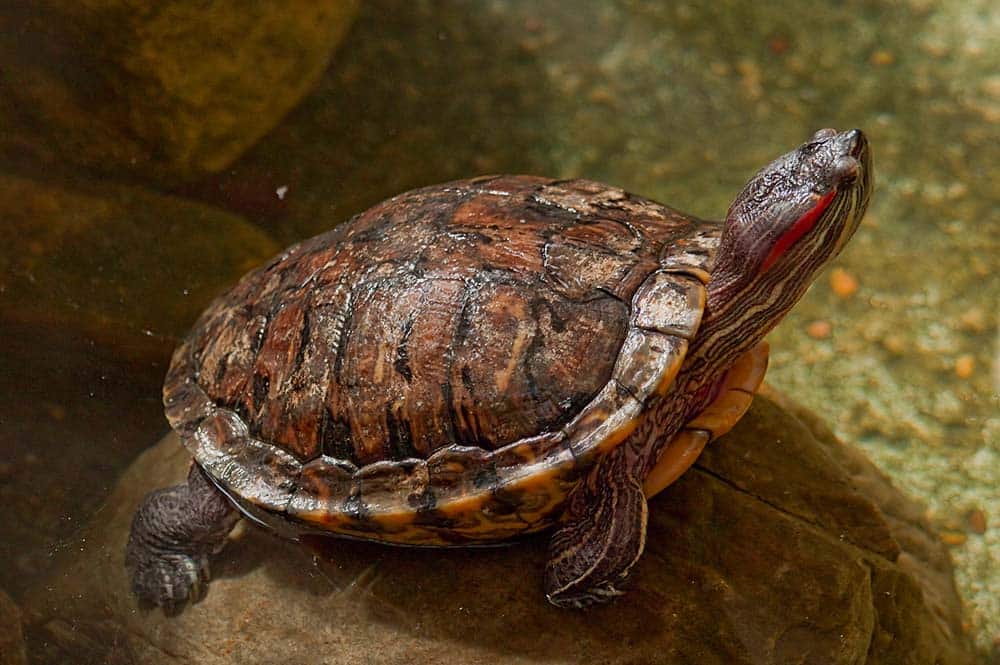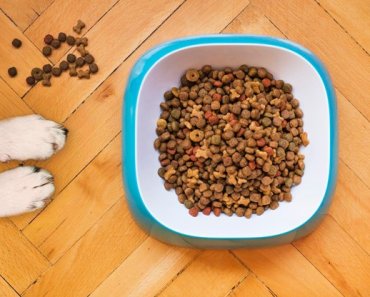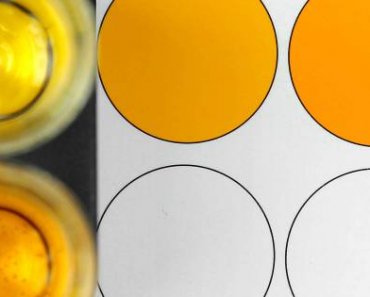
Red-eared slider turtles are a popular pet choice, thanks to their relatively low cost and easy maintenance. But before you bring one home, it’s important to understand how long they typically live. Red-eared slider turtles have a lifespan of between 10 and 40 years in captivity, depending on the care they receive from their owners. In this article, we will discuss the factors that affect their longevity so you can ensure your pet turtle lives as long as possible!
Red-eared slider turtles as pets
Red-eared slider turtles are a popular pet choice for many reasons. They are relatively low maintenance, require a minimal amount of space, and come in an array of beautiful colors. In addition to their vibrant appearance, red-eared slider turtles can be quite sociable once they become familiar with their environment and handlers. Unlike other types of turtles, red-eared slider turtles prefer to live in water and can be kept without an elaborate setup.
Red-eared slider’s average lifespan in captivity vs in the wild
Red-eared slider turtles are a species of turtle that can be found in the wild or kept as pets. While they may live up to 40 years in captivity, their lifespan is significantly shorter when living out in the wild. Let’s explore the differences between a red-eared slider turtle’s average lifespan in captivity versus its average lifespan in the wild.
When living out in nature, red-eared slider turtles have an average life expectancy of 10 to 15 years due to predation and other environmental factors such as extreme temperatures and disease. In contrast, red-eared sliders kept as pets can live for much longer periods of time if given proper care and nutrition – up to 40 years!
The key factor determining how long a pet turtle lives is its environment; captive turtles need clean water, sufficient space, and plenty of sunlight (or UVB lighting) so they can stay healthy and active throughout their lifetime.
Additionally, providing your pet with quality food rich in vitamins and minerals helps ensure it remains healthy over the long term. Proper veterinary care is also essential for keeping your pet happy and comfortable while helping them reach their full potential life span!
Factors that affect the lifespan of a red-eared slider turtle
When it comes to the lifespan of a red-eared slider turtle, there are several factors that can either positively or negatively impact how long they live. The quality and type of habitat, proper nutrition, and overall health care are all important aspects that should be taken into consideration when caring for your pet turtle.
Environment Factors
Habitat is an important factor in determining how long a red-eared slider turtle can live. This species of turtle requires an environment with adequate space, clean water, and access to natural sunlight (or UVB lighting). A tank should be large enough to accommodate the size of your pet turtle as they grow throughout its lifespan. Additionally, tanks need to be regularly cleaned and monitored for any signs of stress or illness. Uneaten food should also be removed from the habitat promptly as it can create unhealthy conditions for turtles.
If a red-eared slider turtle’s environment is not properly taken care of, the consequences can be dire. Without adequate space and clean water, as well as access to natural sunlight or UVB lighting, these turtles are more likely to become stressed or ill. Poor nutrition and inadequate veterinary care will also have a negative effect on their lifespan. Without proper care, this species of turtle may only live for 10 to 15 years instead of up to 40 years in captivity. Therefore, it is essential that pet owners take the time and effort to provide their turtles with the best possible living conditions and health care they can offer so they can enjoy many happy years together!
Diet and Food
Proper nutrition is essential in order to ensure your pet has a long lifespan. Red-eared sliders need a balanced diet that includes vitamins and minerals as well as protein sources such as insects or fish. It’s important to provide fresh produce along with commercial foods formulated specifically for turtles.
A poor diet can have serious consequences for a red-eared slider turtle’s lifespan. Without the proper nutrients, turtles may experience malnutrition, which can lead to stunted growth, poor immune system functioning, and an overall decrease in lifespan. A lack of essential vitamins and minerals will also weaken the turtle’s shell and make it more vulnerable.
Overfeeding should also be avoided since excess food leads to obesity and other health issues that can reduce life expectancy. An excess of food often leads to obesity, which puts turtles at risk of developing a variety of health issues. These include metabolic diseases such as fatty liver disease, kidney failure, and even shell pyramiding (too much protein intake), which can drastically reduce their lifespan.
Overall, providing your pet turtle with a quality diet rich in vitamins and minerals is essential for keeping them healthy throughout their lifetime. Additionally, avoiding overfeeding will help ensure your pet turtle can reach its full potential life span!
Tips to ensure your pet turtle lives a long and healthy life
The best way to ensure your pet turtle lives a long and healthy life is by providing it with the proper habitat, nutrition, and health care. Creating an environment that meets the physiological needs of red-eared sliders is key to ensuring they remain comfortable and healthy throughout their lifetime.
Tip 1: Provide a home that mimics their natural habitat
When choosing the right home for your pet turtle, size should be taken into account. Red-eared sliders can get quite large as adults; They have the potential to grow anywhere from 5 – 9 inches for males and 12 – 13 inches for females, therefore, their habitat should be large enough to accommodate them as they grow.
It’s recommended that you provide these turtles with at least 50 gallons of watery space where they can move freely between both land and deep depths (of 10-30 inches). Tanks should also have ample swimming space, as well as places for basking and hiding; this helps provide turtles with a stimulating environment where they can thrive.
Red-eared slider turtles thrive in habitats with an optimal temperature range of 85 to 95 degrees F during the day and 5 to 10 degrees cooler at night. Temperature can be kept consistent by switching off heat lamps after dark. Additionally, proper lighting is essential for these aquatic creatures as they need both UVA and UVB light for their metabolic processes – without enough exposure, fatal diseases caused by calcium deficiency may develop.
Great! You have nailed down the temperature requirements but that’s not all!
Keeping their home clean may be challenging as red-eared sliders eat and use it as a toilet. Hence, high-quality filtration systems are also essential for keeping the water clean and providing a healthy habitat for your pet turtle. Water parameters such as pH levels, temperature, hardness, and alkalinity should be monitored regularly to ensure optimal conditions are maintained; this will keep your pet happy and healthy while encouraging its maximum life span.
Tip 2: Provide a properly balanced diet and meal plan
For their long-term well-being, red-eared sliders require a balanced and varied diet. Good nutrition for your pet turtle includes regular meals of specially formulated turtle food or protein as well as leafy greens such as romaine lettuce, kale, and spinach. As treats, consider providing them with fresh veggies like broccoli, squash, or carrots – even some protein sources including worms or shrimp! A balanced diet that contains both commercially available food products designed specifically for turtles, as well as fresh produce, will help ensure adequate vitamins and minerals are provided on a regular basis. In addition to food items, calcium supplements are necessary in order to prevent shell deformities due to a lack of nutrients over time.
Remember: young turtles need to eat daily while adults should be fed every 2–3 days only. Overfeeding should be avoided at all times since excess food can lead to obesity and other medical issues which shorten the lifespan of a red-eared slider turtle significantly. — avoid giving fireflies because they are toxic; keep onions chocolate & avocado off the menu too!
Tip 3: Exercise
Keeping your red-eared slider healthy isn’t so much a game of chance as it is a deliberate effort: providing them with enough land and aquatic space for exercise! Give the little chap an inviting terrain – from sand to gravel, more area means better opportunities for exploration. Not only will they be happier in their natural environment, but you’ll also experience improved physical health (and maybe even ease that mental itch too!)
Tip 4: Regular checkups
Finally, regular veterinary visits play an important role in maintaining your pet’s health over time. Having an experienced veterinarian assess your pet’s well-being will help detect any potential issues before they become serious problems. They may also suggest treatments or medications if necessary; this helps increase the chances of recovery from illnesses or injuries so that you can enjoy many years together with your beloved turtle companion!
Conclusion
Taking care of a pet turtle is an incredibly rewarding experience, but it requires time and dedication. Knowing the lifespan of your red-eared slider turtle before bringing one home will help you plan ahead for its long-term needs and ensure that you can provide the best possible environment to keep them healthy and happy. With proper housing, nutrition, exercise, and regular checkups from a qualified veterinarian, you can enjoy many years together with your beloved pet!


























